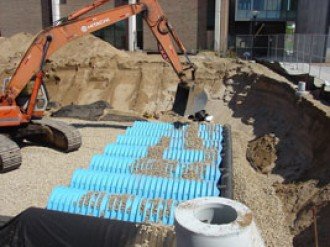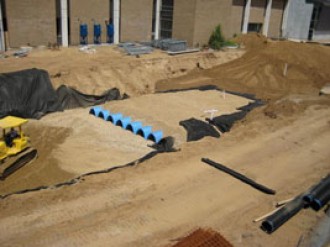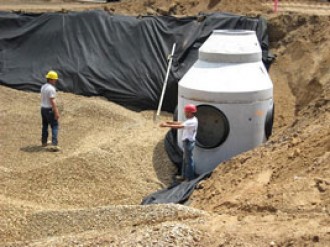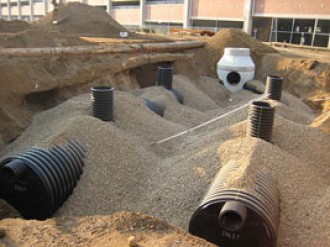South Kohrman renovation
Managing stormwater run-off is an important part of the job of Planning, Space Management and Capital Projects at Western Michigan University. The renovation of South Kohrman is an excellent example of the need for storm water management and how a solution is applied.
Any built environment—buildings, parking lots, sidewalks, tennis courts, playgrounds, etc.—replaces water-absorbing soil with non-porous surfaces. The rapid flow of rain water and melted snow onto non-paved areas can result in soil erosion, which further deteriorates the ground's ability to absorb run-off. Pollutants and debris, such as rock salt and gravel from parking lots, travel with the flow. The waters that cannot be absorbed on the site continue to travel through the watershed or into storm sewers and on to the regional sewage treatment system. Retention of stormwater enables the soil to naturally filter the water on site.
It is now recognized that it is necessary to compensate for the loss of water-absorbing surfaces in any building project. An effective stormwater retention strategy will plan, design, and implement solutions to runoff and erosion. Potential stormwater loads are defined as "ten-year", "fifty-year", or "hundred-year" storms. There are standards for determining what kind of load and volume of water each retention strategy must control.Common retention solutions are storm swales, run-off ditches, and the ubiquitous "retention pond".
After one hundred years of development, the WMU campus is heavily-built, with a large amount of paved, non-absorbing surfaces. The situation is further complicated by the sloping terrain that drains water into the Goldsworth Valley and the Arcadia Creek. In the area of campus near Miller Auditorium stormwater run-off has caused significant problems for many years. The Richmond Center and South Kohrman projects provided the opportunity to solve the stormwater problems as part of the construction.
The stormwater retention solution for the area around South Kohrman and Richmond Center was to construct underground structures on prepared gravel beds. These collect the run-off and allow the water to slowly seep into the ground below. The following images highlight the process of this solution:
 Installing overflow piping
Installing overflow piping
 Site work for overflow piping
Site work for overflow piping
 Installing dry well
Installing dry well

Installing separator tanks
